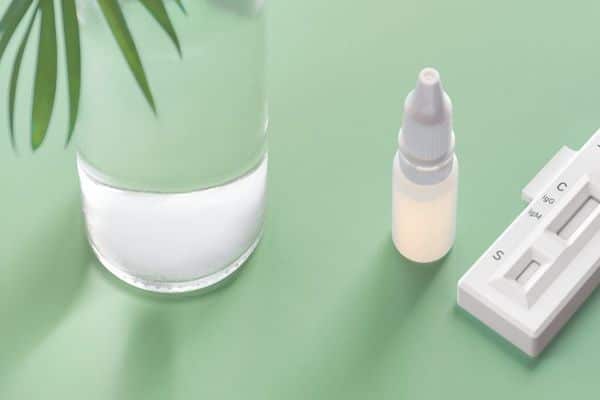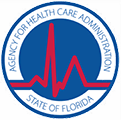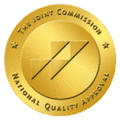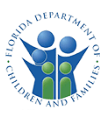12 Steps Simplified
Many people who struggle with an addiction will avoid getting treatment because they believe that the 12 step treatments are all about being religious. The truth is that someone who needs this type of treatment can be religious, but they don’t have to be. If you are struggling with addiction, hopefully, by our Through the Archway team simplifying the 12 steps, you can better understand the process of recovery.
Before We Begin
Before we begin going through the 12 steps, we would like to talk a bit about who can work on the 12 steps.
There are many different types of people who attend 12-step addiction treatment center programs or addiction recovery meetings. There are atheists, Christians, Buddhists and many others. If you aren’t religious, that doesn’t mean you can’t attend 12-step treatment. These programs are more about spirituality. They don’t rely on religious factors to help people progress in their recovery.
Step 1 – Making the Admission
Step 1 is as follows – We admitted we were powerless over our addiction – that our lives had become unmanageable.
What does this mean? It means you are going to admit that you have no control over your addiction. You are to the point where you believe and know that the addiction has made your life a mess.
If you can make this admission to yourself, then, you can proceed on with the rest of the 12 steps.
Step 2 – Restoring Your Sanity
Step 2 is as follows – Came to believe that a Power greater than ourselves could restore us to sanity.
The Power greater than yourself doesn’t have to be God. It can be anything you believe can help you to create a better life for yourself (the universe, Earth, meditative forces, etc.) The point of this step is to realize that something or someone out there can help support you in the recovery process, so you can restore your sanity.
Step 3 – Turning Your Will Over to Your Hig her Power
her Power
Step 3 is as follows – Made a decision to turn our will and our lives over to the care of God as we understand Him.
Now, just because this step mentions God, you don’t have to take it so literally. It can be the Higher Power we talked about above. When working the 12 steps, you will work with your Higher Power on many things, including turning your will and the direction of your life over to them.
If you are already to this step that is great. If not, our Through the Archway team can help you to get this far and even farther in the process of the 12 steps.
Step 4 – Made an Inventory of Yourself
Step 4 is as follows – Made a searching and fearless moral inventory of ourselves.
When it comes to the 12 steps, it is important that you don’t skip any steps, especially this one. You will need to make this inventory, so you can track amends, wrongdoings, strengths, weaknesses, etc.
There are worksheets that can help you to make this inventory. When you attend treatment programs such as the one here at Through the Archway, there are professionals who can help you to create this inventory, as well.
Step 5 – Admitting Your Wrongs to People
Step 5 is as follows – Admitted to God, to ourselves and to another human being the exact nature of our wrongs.
Again, you don’t have to make the admission to God, unless you believe in him. You can make the admission of your wrongdoings to your Higher Power, to yourself and to someone you trust from your support network.
It is important to recognize that this step, along with other 12 steps, can take some time. You don’t have to rush through the process. Everyone works through the 12 steps on their own timing and may even go backward some steps before going forward again.
Step 6 – Removing Defects of Character
Step 6 is as follows – Were entirely ready to have God remove all these defects of character.
After you have gone through your inventory and wrongdoings, you are ready to have your Higher Power help you to make positive changes in your life. With the guidance of your Higher Power, you are ready to create a better, healthier and substance-free life for yourself.
Step 7 – Removing Shortcomings
Step 7 is as follows – Humbly ask Him to remove our shortcomings.
This is the step in which you ask your Higher Power to help free you from those shortcomings we talked about earlier in your inventory. Your Higher Power can help you to do this, so you can make those positive changes mentioned in Step 6.
Step 8 – Making a List and Being Ready to Make Amends
Step 8 is as follows – Made a list of all persons we had harmed, and became willing to make amends to them all.
In this step, you are going to make a list of the people you have wronged. Then, you are going to write down how you can make amends to these people. You aren’t going to take action on these amends during this step, though.
Step 9 – Making Those Amends
Step 9 is as follows – Made direct amends to people wherever possible, except when to do so would injure them or others.
It is very important that you read through this entire step. It is a great thing to make genuine amends to those who you have wronged. However, if doing this is going to injure or harm that person, another person or yourself, it shouldn’t be done directly. You can always write a letter, do some journaling or talk to your Higher Power about this amend.
Step 10 – Keep Taking Personal Inventory and Admitting Your Wrongdoings
Step 10 is as follows – Continued to take personal inventory and when we were wrong promptly admitted it.
During this step, which will be continuous throughout your lifelong recovery, you will keep working on the inventory you created earlier. We are all humans and everyone makes mistakes, so there will be more wrongdoings that you need to take inventory of. When these occur, it is essential to your recovery that your promptly admit you have done wrong and make amends for those wrongs.
Step 11 – Making Conscious Contact with Your Higher Power
Step 11 is as follows – Sought through prayer and meditation to improve our conscious contact with God, as we understood Him, praying only for knowledge of His will for us and the power to carry that out.
Basically, this is one of the 12 steps, where you look again to your Higher Power for assistance with your recovery. You will ask your Higher Power or someone from your support system (when necessary) to help you make the best decisions for your life.
Step 12 – Spiritual Awakening
Step 12 is as follows – Having had a spiritual awakening as the result of these steps, we tried to carry this message to alcoholics, and to practice these principles in all our affairs.
Notice this says a spiritual awakening, not a religious one. That is because addiction recovery is about spirituality and not necessarily religion. Being that you have had the spiritual awakening at this point, you will try to help other alcoholics see how helpful recovery is and continue to practice what you have learned in your own life, as well.
Use the 12 Steps to Better Your Life
Are you ready to use the 12 steps to better your life? If so, contact us today, here at Through the Archway, to begin your recovery and spiritual lifestyle.






